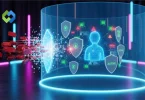Now imagine a system that learns and adapts in real-time to streamline operations, prioritize critical cases, and personalize care. That’s the promise of reinforcement learning, a machine learning approach designed to tackle complex, decision-heavy challenges in healthcare. Partnering with a Healthcare AI agency can help organizations implement these intelligent systems effectively, improving both clinical outcomes and operational efficiency.
In this post, we’ll explore the potential of reinforcement learning to address key areas like personalized treatments, hospital efficiency, drug discovery, and diagnostics. From managing patient flow to improving diagnosis accuracy, reinforcement learning is redefining how healthcare challenges are solved. We’ll also talk about new ways to hire a coder with the experience needed to build AI/ML capabilities for healthcare use cases. By the end of this blog, you’ll know how to use reinforcement learning at your healthcare set-up and have an action plan on how to get the talent to build what you envision.
Table of Contents
Table of Contents
Why Reinforcement Learning for Healthcare?
Reinforcement learning offers unique advantages that make it a potential candidate for your healthcare applications.
Unlike traditional methods, it thrives in handling delayed feedback and sequential decision-making—essential for navigating complex treatment pathways. A standout feature is its ability to continuously improve by learning from outcomes, even in the absence of precise models for intricate biological systems.
This flexibility and capability of reinforcement learning is essential for healthcare, where the human body’s responses to treatments can be nonlinear, variable, and delayed. It can help you adjust treatment plans over time or respond to unexpected patient outcomes.
This combination of efficiency and adaptability highlights the potential of reinforcement learning to improve decision-making and patient outcomes in ways that traditional methods cannot.
Practical Applications of Reinforcement Learning in Healthcare
Reinforcement learning is helping tackle some of healthcare’s most complex challenges with adaptive and data-driven solutions. Here’s how it’s making an impact:
Dynamic Treatment Regimes (DTRs)
With reinforcement learning, you can create personalized treatment plans for long-term conditions like cancer or HIV.
Reinforcement learning adapts over time, tailoring drug dosages, treatment options, and scheduling based on patient data. Its ability to optimize these regimes ensures better patient outcomes, even in critical care settings like ICUs.
Automated Medical Diagnosis
Diagnosing diseases isn’t easy, but reinforcement learning simplifies it by using smaller datasets compared to traditional methods.
By analyzing patient history and symptoms, reinforcement learning has the potential to make more accurate decisions, reducing the risk of costly misdiagnoses. A healthcare software development company can integrate these solutions into diagnostic tools to improve clinical outcomes.
Healthcare Resource Scheduling and Allocation
When it comes to managing hospital operations, reinforcement learning gives you the tools to analyze staffing levels, patient trends, and seasonal demand.
This helps you optimize resource allocation and scheduling, ensuring patients receive timely care while reducing operational bottlenecks.
Health Management
Reinforcement learning supports you in crafting adaptive health programs for patients managing conditions like diabetes or obesity.
By adjusting exercise or weight management plans in real-time, reinforcement learning helps patients stay engaged and achieve their health goals.
Drug Discovery and Development
Drug development can be time-consuming and expensive. The potential of reinforcement learning lies in its ability to automate hypotheses and identify promising compounds faster.
For example, reinforcement learning can also assist in optimizing the distribution and usage of medical tablets by predicting demand patterns and ensuring timely supply in clinical settings.
Source: Pexels
Challenges of Reinforcement Learning in Healthcare
Reinforcement learning’s immense potential comes with challenges that must be addressed. Here are the key obstacles you might encounter:
Data Scarcity
Training reinforcement learning agents on real patient data is often unethical due to privacy laws like HIPAA. Simulated or historical data is used instead, but accessing such high-quality datasets is difficult, limiting the agent’s effectiveness.
Partial Observability
The human body’s complexity makes it challenging for reinforcement learning agents to fully understand their environment. Metrics like blood pressure or temperature only provide snapshots, leaving the agent with an incomplete view of a patient’s condition.
Reward Formulation
Designing reward systems that balance long-term patient outcomes with short-term feedback is tricky.
For instance, temporary improvements in metrics like blood pressure may not reflect overall success, while relying solely on long-term rewards delays critical feedback for the agent.
Despite these hurdles, advancements in data accessibility and refined reward systems continue to push reinforcement learning closer to large-scale clinical applications.
Governance Steps for Reinforcement Learning in Healthcare
Implementing reinforcement learning in healthcare isn’t just about deploying cutting-edge technology—it’s about doing so responsibly, with safety, ethics, and precision at the forefront. Here are the key steps you need to consider:
- Define Ethical Boundaries: Set clear ethical parameters to guide reinforcement learning usage. Ensure strict adherence to privacy laws like HIPAA and safeguard patient data from misuse, laying a solid foundation of trust.
- Set Validation Protocols: Before stepping into clinical settings, rigorously test reinforcement learning models in simulated environments. This ensures they’re ready for real-world challenges, reducing risks and optimizing performance.
- Ensure Transparency: Make the decision-making process of reinforcement learning systems understandable. Document every step to build trust among healthcare professionals and patients while fostering accountability.
- Monitor and Audit: Don’t just deploy and forget. Continuously track the model’s performance in real settings, and conduct audits to identify biases, inaccuracies, or unforeseen risks. Adjust strategies as needed to maintain reliability.
- Incorporate Multi-Stakeholder Input: Bring together experts—clinicians, data scientists, and regulators—to oversee reinforcement learning systems. Collaboration ensures the balance between innovation and safety, aligning tech advancements with patient care needs.
Bringing the Potential of Reinforcement Learning to Life
Reinforcement learning is paving the way for personalized patient care, optimized hospital operations, and faster drug discovery—all while driving greater efficiency and better outcomes for patients.
To turn this potential into reality, you need the right expertise. That’s where HireCoder AI, an AI solutions company, steps in.
With a team of top-tier coders and developers, HireCoder AI specializes in crafting tailored reinforcement learning solutions designed to meet your unique healthcare challenges.
Their ability to bridge innovation with practical implementation ensures RL-backed systems that deliver real results.
Ready to bring reinforcement learning to your organization? Contact HireCoder AI today and explore how their expertise can help you lead the way in smarter, more efficient patient care.
FAQs
Q1: How is reinforcement learning different from other machine learning techniques in healthcare?
Reinforcement learning focuses on sequential decision-making, optimizing long-term outcomes. Unlike traditional machine learning, it learns from trial and error, adjusting actions based on rewards or penalties in dynamic, real-world scenarios like patient care.
Q2: Can reinforcement learning be applied to wearable healthcare devices?
Yes, reinforcement learning can personalize recommendations for wearable devices by adapting to user data over time. For example, it can optimize exercise or medication reminders based on individual habits and health trends, improving adherence and outcomes.
Q3: How does reinforcement learning handle real-time patient data in healthcare?
Reinforcement learning processes real-time data like vitals or lab results to make adaptive decisions. While it works best with partial observability, continuous advancements are enhancing its ability to manage dynamic and unpredictable patient conditions.
Q4: What infrastructure is needed to implement reinforcement learning in healthcare?
You’ll need access to secure, high-quality datasets, computational resources like GPUs for training, and a robust simulation environment. Collaborating with experts, like HireCoder AI, ensures these components are aligned for successful implementation.














